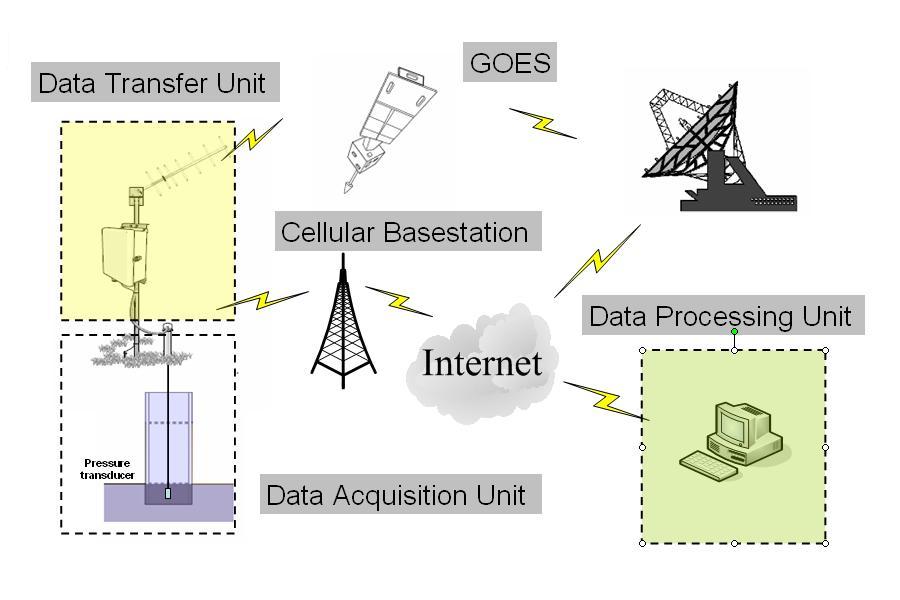Nebraska Real-Time Groundwater Monitoring Network
About the Project
Groundwater is the 2nd largest available reservoir of fresh water. The diagram below shows that of the world's fresh water, the majority is locked away as ice in the polar ice caps, continental ice sheets and glaciers. Surface waters such as rivers and lakes only accounts for less that 1% of the worlds fresh water reserves whereas groundwater accounts for 12% of the worlds freshwater resources.
For a detailed explanation of where Earth's water is, look at the data table below. Notice how of the world's total water supply of about 326 million cubic miles of water, over 96 percent is saline. And, of the total freshwater, over 68 percent is locked up in ice and glaciers. Another 30 percent of freshwater is in the ground. Surface-water sources, such as rivers, only constitute about 300 cubic miles (about 1/10,000 th of one percent of total water).
- Data acquisition unit: consists of a traditional water monitoring transducer and an embedded system. The embedded system does preliminary signal processing and packs the hydrologic data collected by the transducer into a proper and secure format ready for remote transmission.
- Data transfer unit: consists of a satellite transceiver module or an cellular communication module, both of which will guarantees the reliable telecommunication with minimum expense. Both data acquisition unit and data transfer unit are powered by a solar panel and battery. All the hydrologic data will be collected hourly and transmitted daily to a central base station. Adjustments in the frequency of measurements and reporting can be made if a site is experiencing significant changes in water level or if future research investigations require more frequent measurements.
- Data processing unit: with a friendly Graphical interface, is located at the base station to analysis and archive the real-time data.
